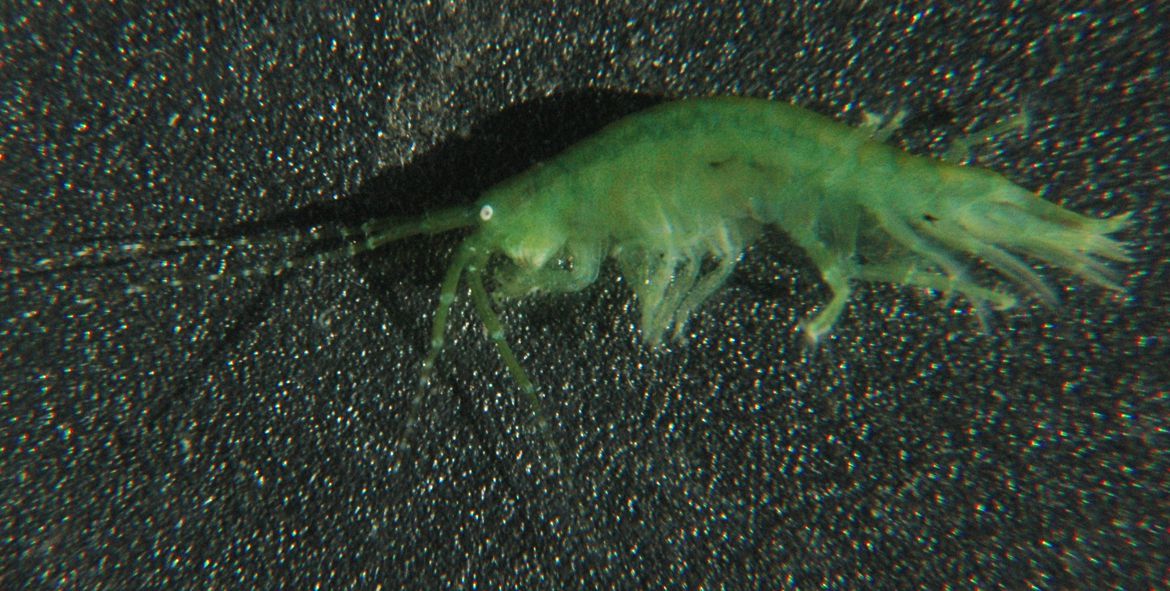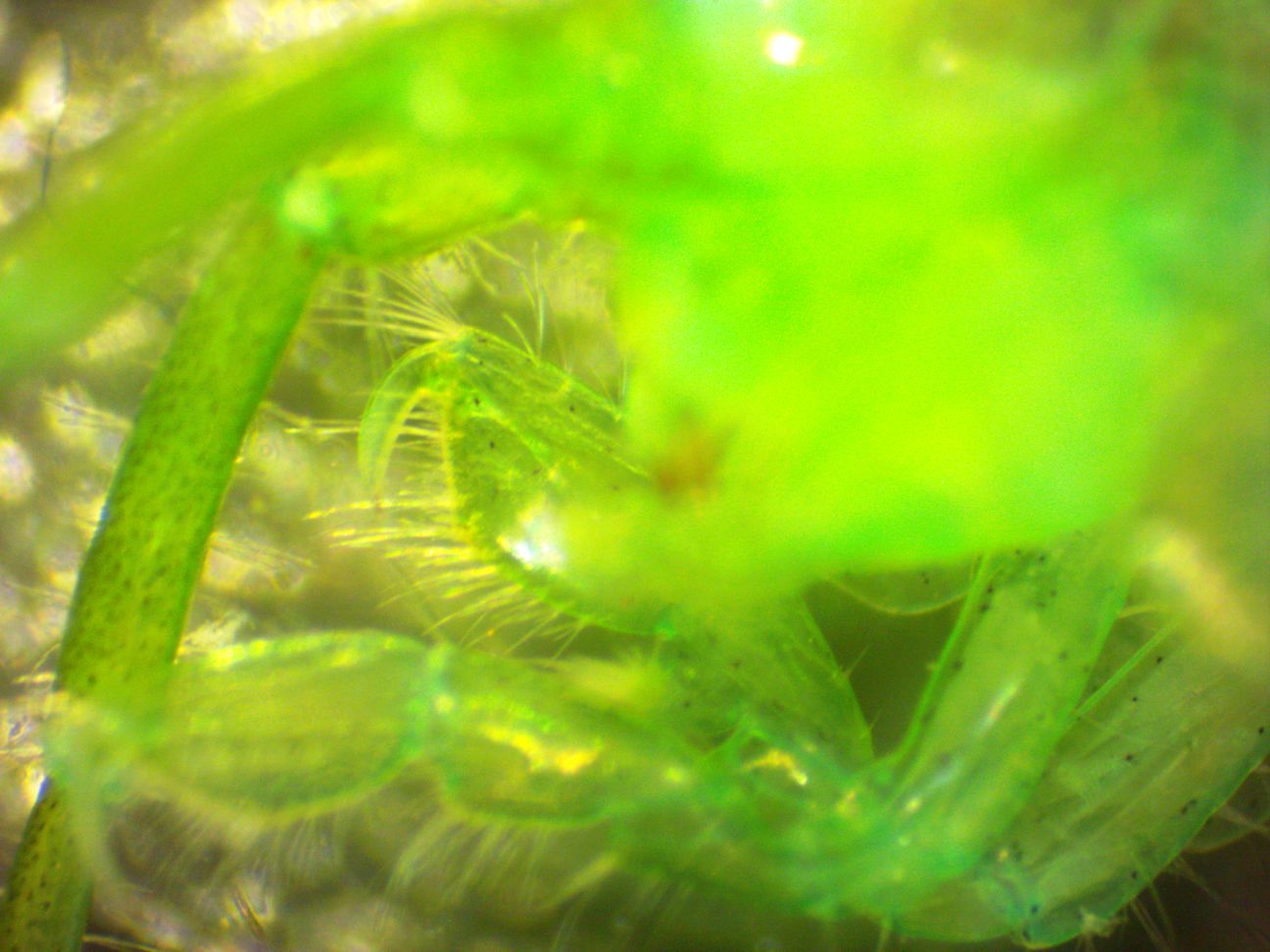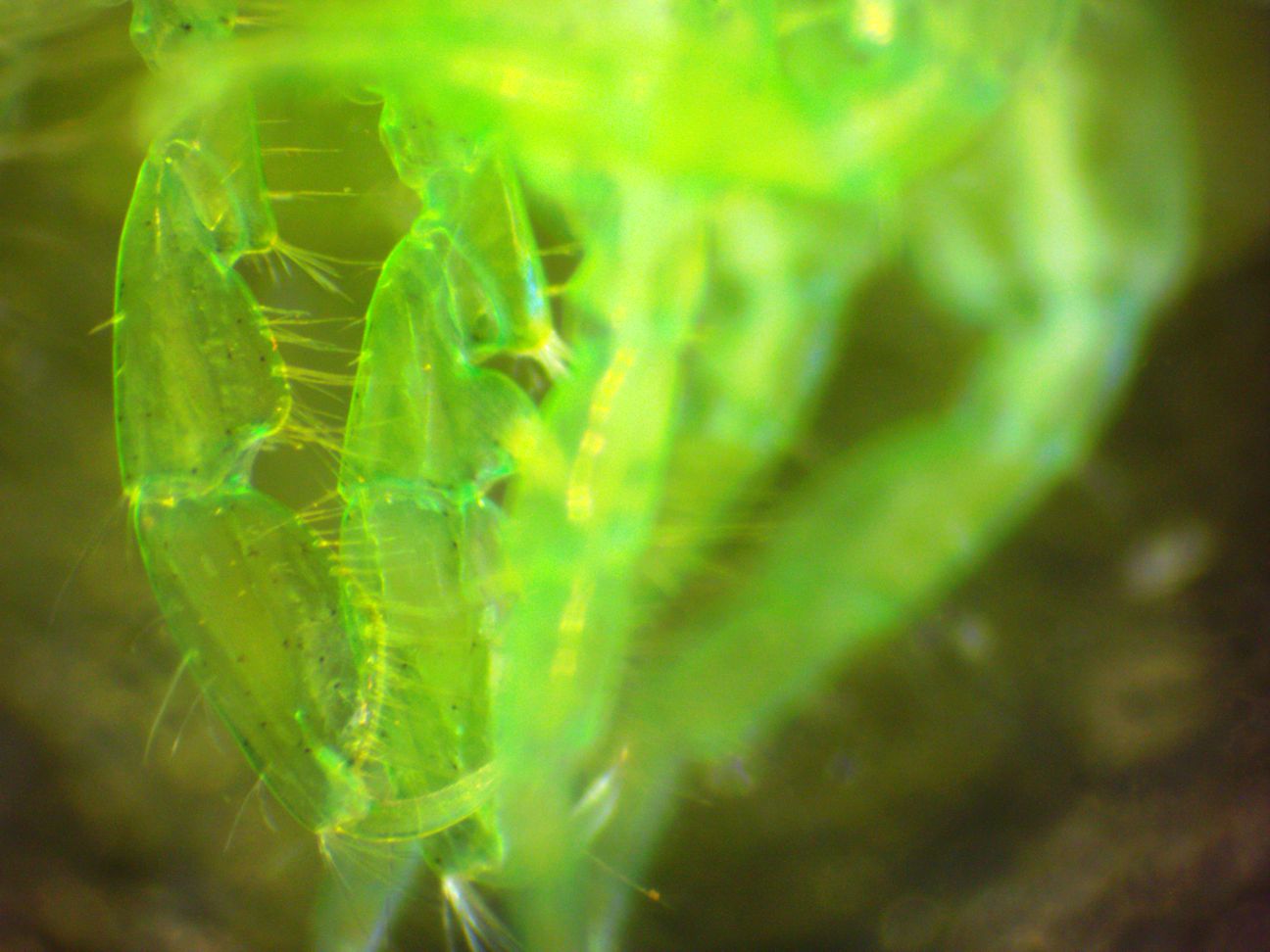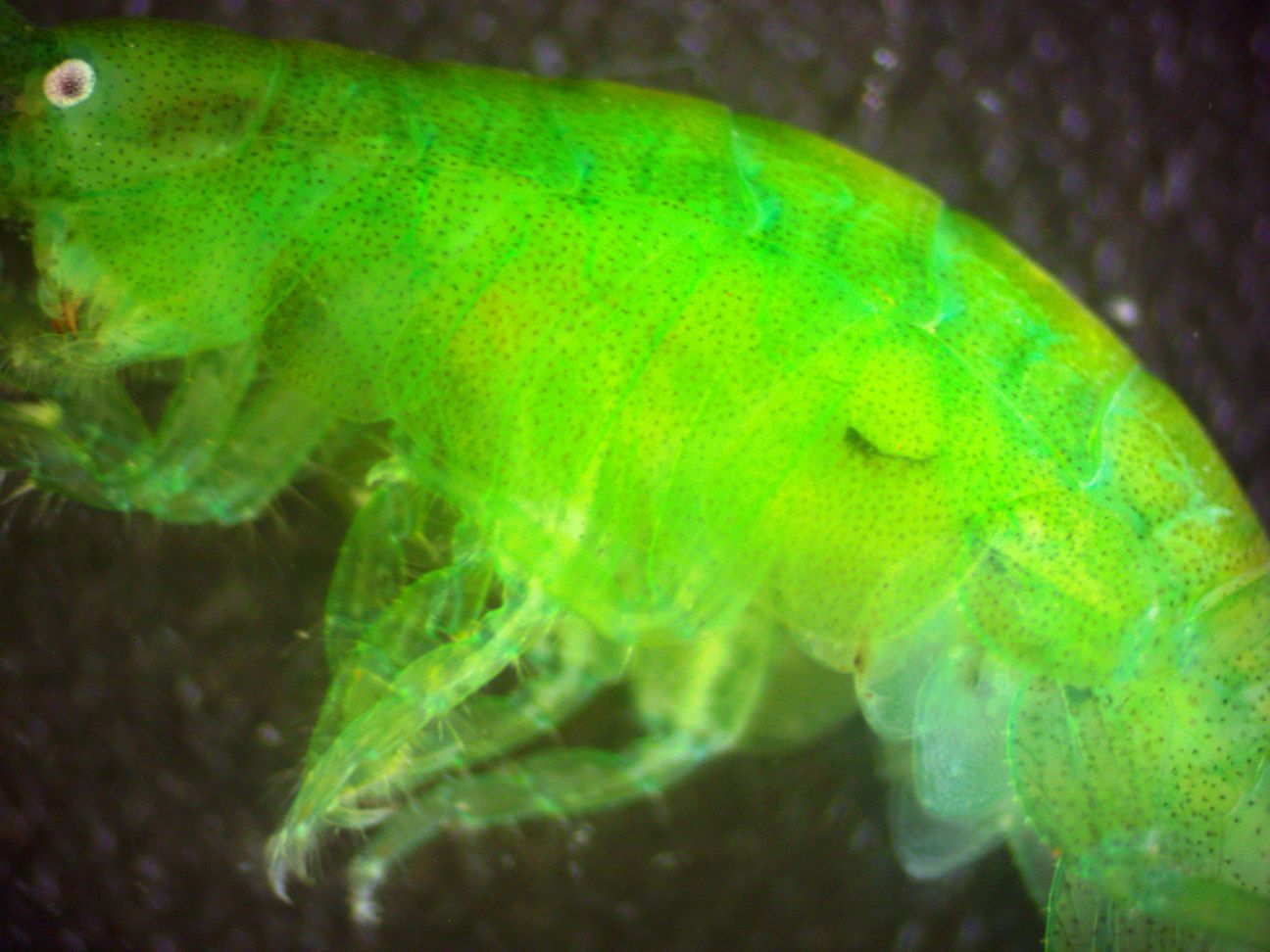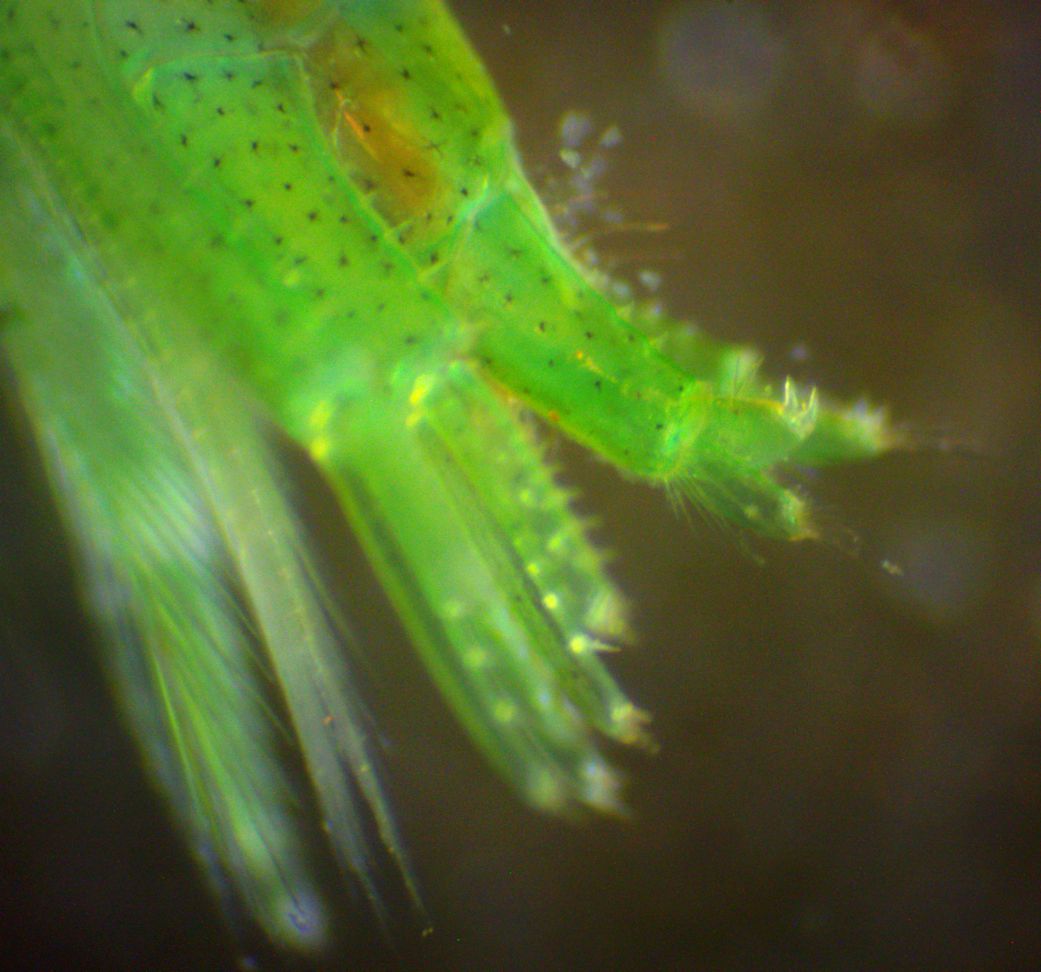Description: As is characteristic of Family Ampithoidae, this gammarid amphipod has a biramous 3rd uropod, both rami of which are shorter than the peduncle (photo). The outer ramus of uropod 3 has two curved teeth at the apex, while the inner ramus has setae plus spines (photo). The outer lobe of the animal's lower lip has a deep cleft. This species has no accessory flagellum on its antennules. Antenna 2 is longer than antenna 1 and is not thickly covered with setae. The palm of gnathopod 1 is definitely oblique and the gnathopod is subchelate (photo). The second gnathopod (photo) is larger than the first, and its sixth article (palm) is ovate and oblique. The second article of pereopods 3 and 4 are rectangular and less than 1/2 as wide as their coxal plates (photo). The posteroventral corner of the second and third epimera are not toothed (photo). The antennae and uropods have just a few short setae. Uropods 1 and 2 do not have a distal tooth on the peduncle. Greenish or brownish with darker speckles. Males to 1.8 cm, females to 2 cm.
Note: Although this individual is male,
the 2nd gnathopod has only a shallow concave spot instead of being
broadly concave as is expected of this species, so the identification
is only tentative.
How to Distinguish from
Similar Species:
A. sectimanus
is similar but has many long setae on its antennae and uropods, plus
gnathopod 2 has only a narrow excavation.
Geographical Range:
Alaska to California
Depth Range:
Intertidal and shallow subtidal;
Habitat:
Algae and eelgrass
Biology/Natural History:
This species can survive in less than full seawater salinity (eg in
outer estuaries). Females may be carrying eggs during March
to
August.
| Return to: | |||
| Main Page | Alphabetic Index | Systematic Index | Glossary |
References:
Dichotomous Keys:
Carlton,
2005
Kozloff,
1987, 1996
General References:
O'Clair
and O'Clair, 1998
Scientific Articles:
Web sites:
General Notes and
Observations: Locations,
abundances, unusual behaviors:
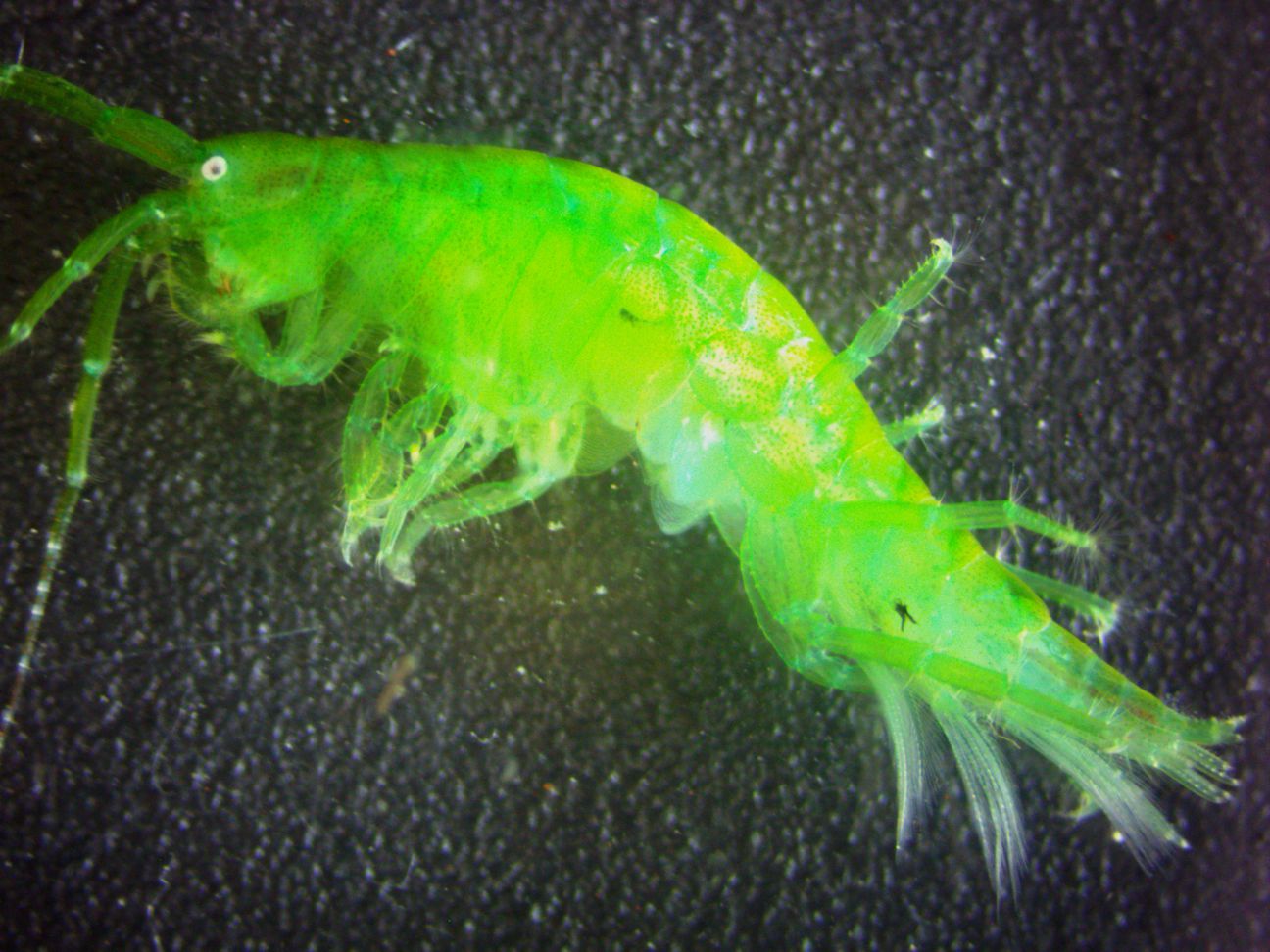
This closer view shows the strong green color with the darker spots.
This view of gnathopod 1 shows that it is subchelate and has an oblique palm.
Gnathopod 2 also has an angled palm and is subchelate. It is larger than gnathopod 1.
The coxal plates for pereopods 3 and 4 are much wider than the second articles of those pereopods, which are rectangular.
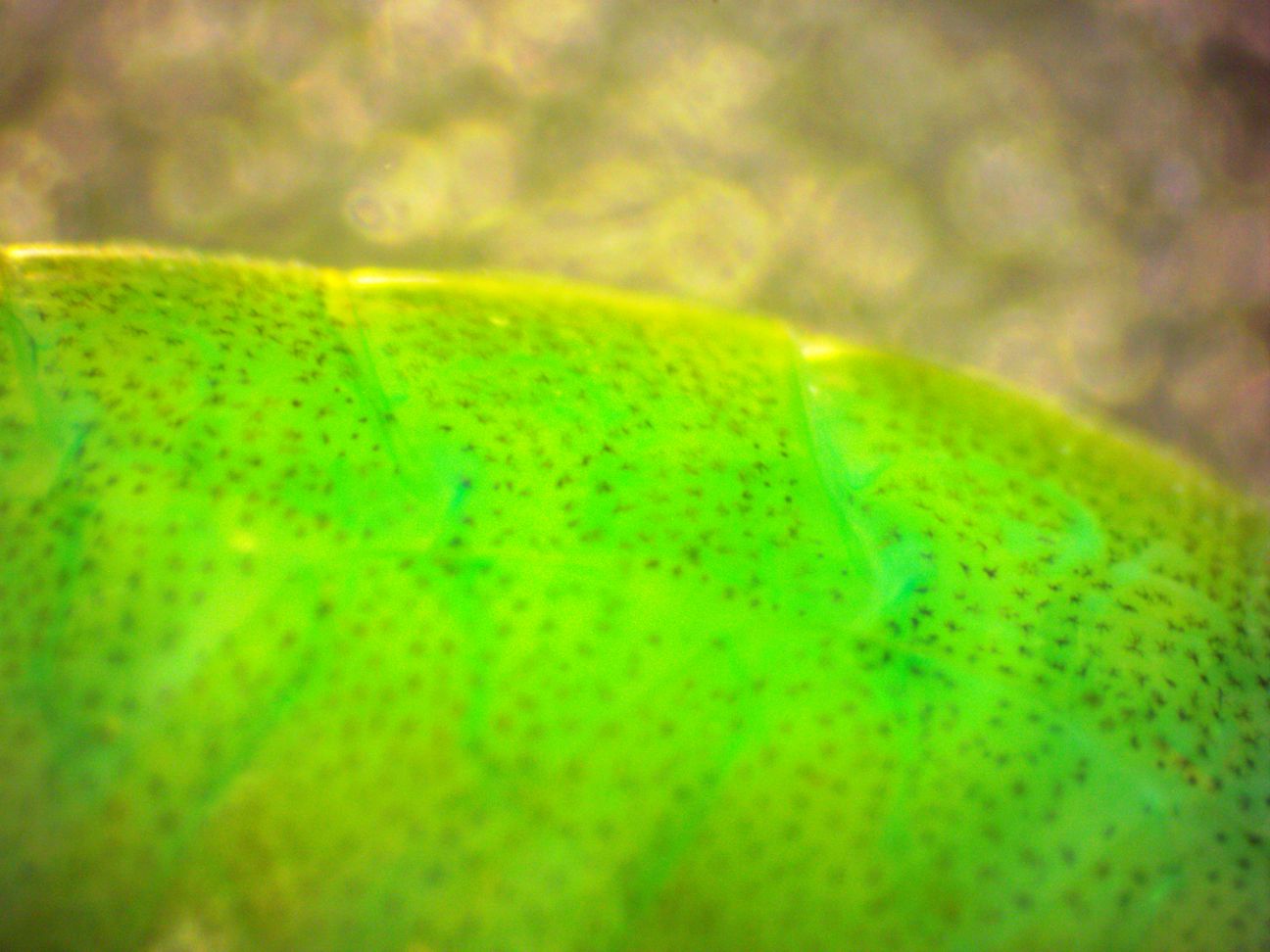
This view shows epimera 2-4 (top of photo, left to right), which are dorsal to coxae 2-4 (bottom of photo). The posteroventral borders of epimera 2 and 3 are rounded, not toothed.
Uropod
3 (on the right) is biramous. The outer ramus (in sharpest
focus
here) has two curved distal teeth. The inner ramus (behind
it,
less sharp focus) has both teeth and setae. Neither of the
two
rami is as long as the peduncle (basal article) of the uropod.
Authors and Editors of
Page:
Dave Cowles (2014): Created original page
CSS coding for page developed by Jonathan Cowles (2007)
Salish Sea Invertebrates web site provided courtesy of Walla Walla University
